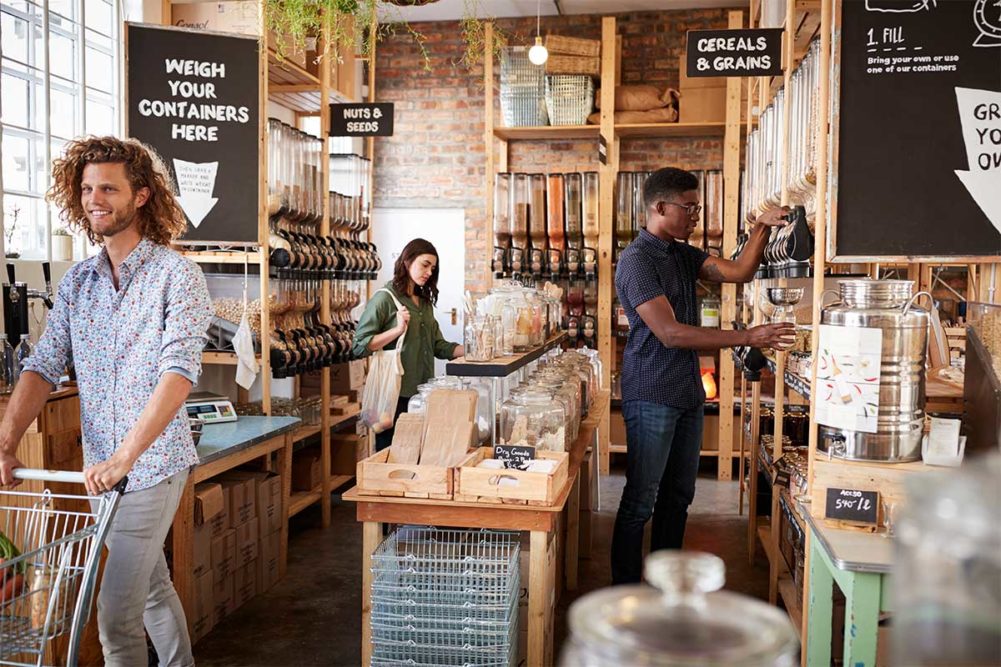ANAHEIM, CALIF. — Packaging is a major opportunity when it comes to improving the sustainability of the food industry. At IDDBA 2023, held June 4-6 in Anaheim, Calif., Kurt Richars, director of market development and sustainability for Anchor Packaging, detailed the strategies that hold the most promise for in-store bakeries when it comes to packaging that is truly sustainable and not a greenwashed solution.
First and foremost, he said, packaging must protect the food, both for food safety and quality, but this also offers an opportunity to reduce food waste.
“The EPA estimates that 30-40% of food produced in the United States is wasted,” Mr. Richars said. “Most of this waste is happening after the producer at the grocery store, restaurant or in the home. And that’s why packaging has an opportunity to play a great role here because that’s where packaging can make the most difference in preventing the food waste.
The second priority in sustainable packaging is making it a convenient, sustainable solution for the end user because companies rely on the end user to ensure the packaging is handled properly instead of ending up in a landfill.
Once a packaging company, retailer or producer has the foundation of packaging that protects and preserves the food, they must then determine whether a single-use package or multi-use package best suits their product and end-consumer’s needs.
When it comes to single-use packaging, sustainability is centered on minimizing impact, often through composting or recycling. Mr. Richars, however, pointed out that compostable packaging presents several barriers to convenience, most notably access. Because compostable packaging takes longer to breakdown than organic packaging, it cannot simply be added to organic compost.
“Only one in 10 consumers live within range of a compost program that will accept compostable packaging,” he said.
This leaves most consumers without a convenient way to compost this type of packaging.
When considering recycling as an option, Mr. Richars pointed out that plenty of packaging is recyclable, but a key point is it must be recyclable after it’s used. Another challenge is the lack of uniformity in the US recycling infrastructure. Acceptance and technology for sorting recycling at material recovery facilities (MRFs) vary from municipality to municipality, so it’s critical to understand local needs and capabilities.
For those applications in which multi-use packaging applies, Mr. Richars detailed three options: return programs, refill programs and packaging that’s designed for the consumer to reuse at home. He argued that refill programs hold the most opportunity. Return programs — which rent out containers to consumers — pose significant barriers in terms of cost of product, washing, transportation, loss and damage, and tracking. In addition, return programs take dozens of uses before seeing an impact on sustainability. Refill programs, in which consumers own the container, only have one cost, the initial cost of the container, while also reducing the amount of packaging in the market. The main challenge with refill programs is the assurance that the packaging remains sanitary.
“It’s a simpler program and easier to adapt,” Mr. Richars said.
Additionally, research from Technomic suggests that consumers are primed to accept reusable packaging with 77% of consumers saying they already reuse containers at home. When asked how much reusable packaging was worth, consumers valued it at 3% more, which covers the cost of the containers. That percentage increased when consumers were broken into demographics by age and gender. Shoppers between the ages of 18-34 and female shoppers thought it was even more valuable than total shoppers overall.
“Legislation is coming; consumers value this, and it’s an opportunity to break through with sustainability and deliver more value for the consumer,” Mr. Richars said.





